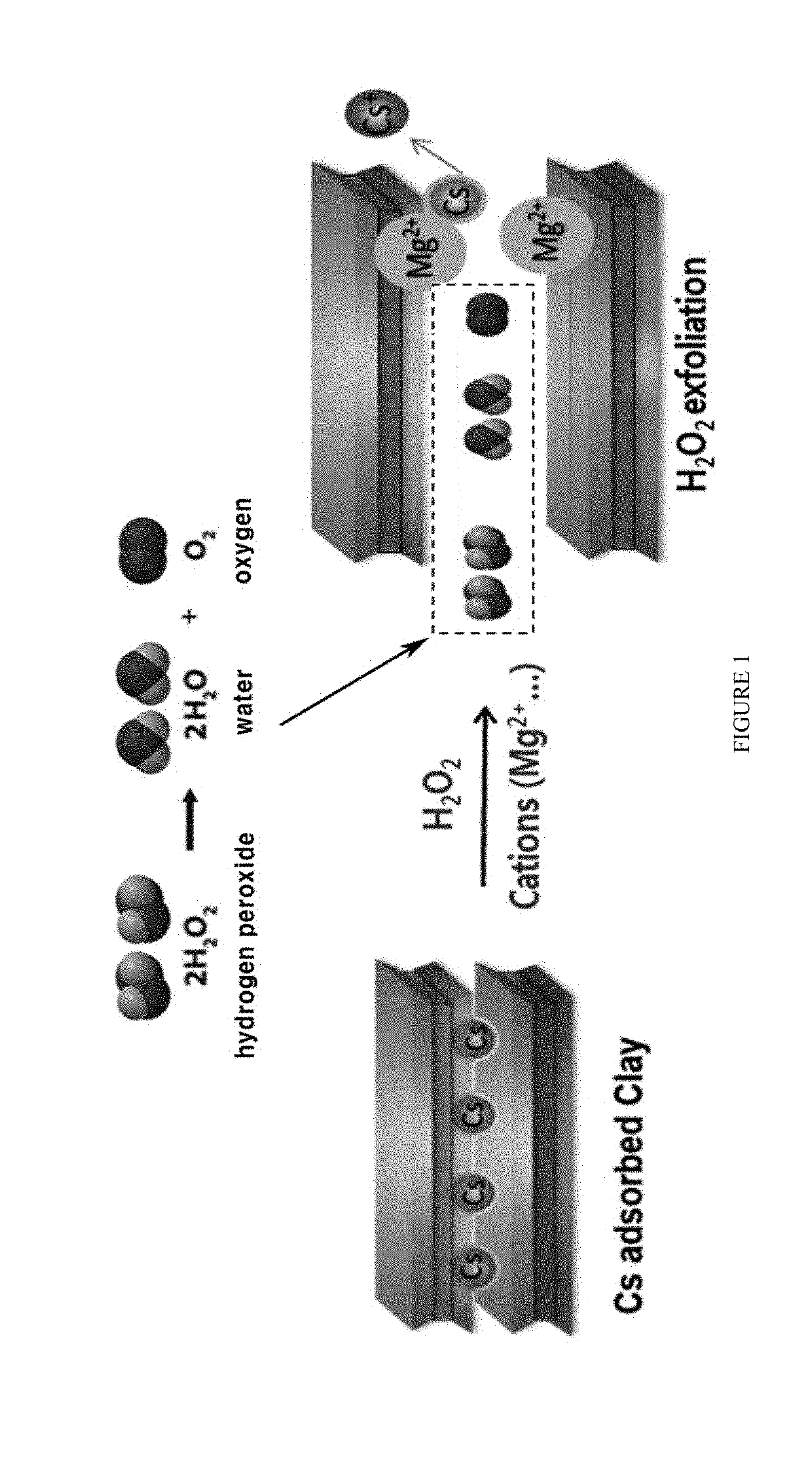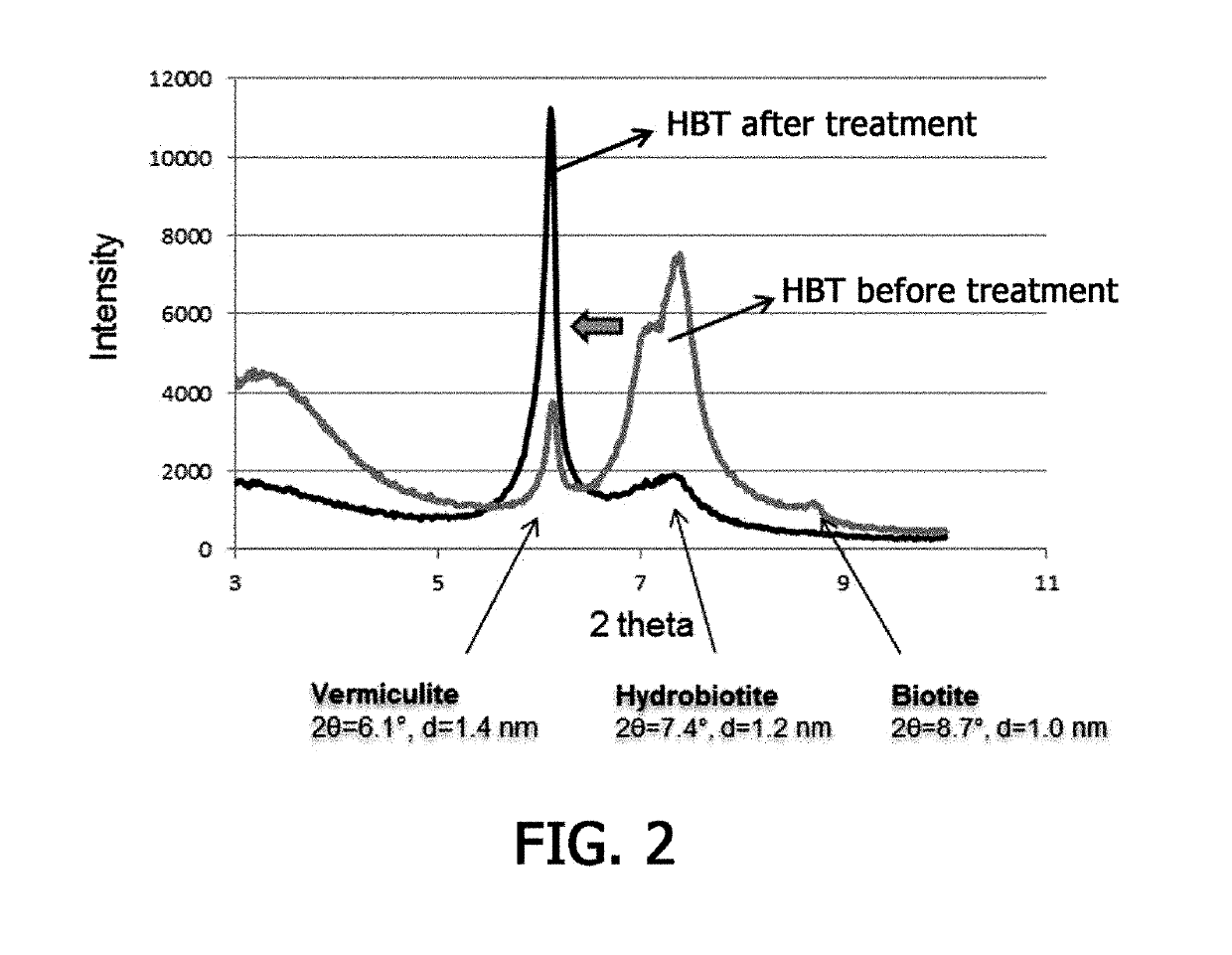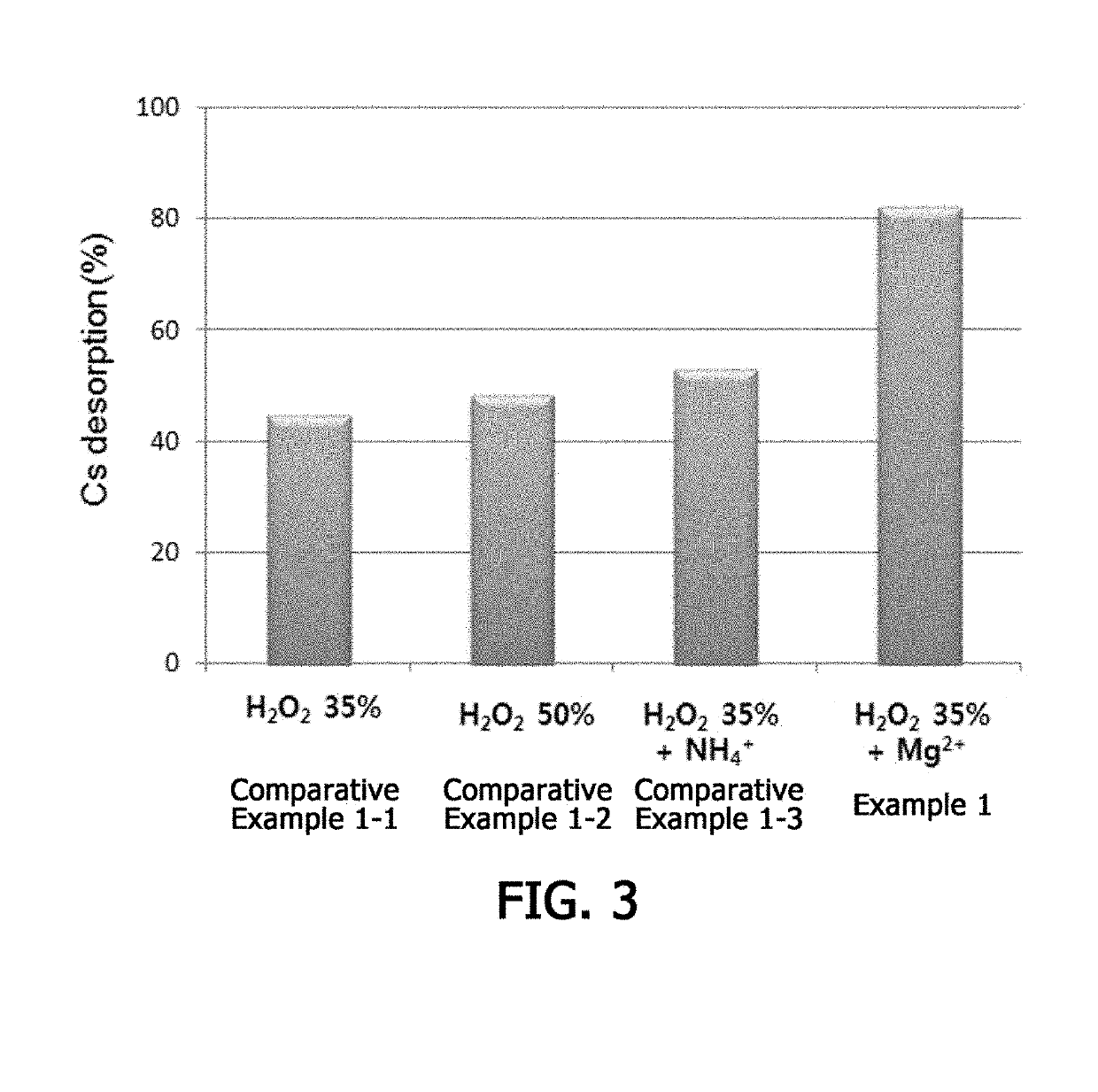Method for Removing Cesium in Clay Mineral Using Hydrogen Peroxide
a technology of hydrogen peroxide and cesium, which is applied in the direction of rubidium/caesium/francium compounds, nuclear engineering problems, rubidium/caesium/francium compounds, etc., can solve the problem of difficult to remove cesium through a common method of purifying soil, and the removal rate of selectively adsorbing cesium is very low
- Summary
- Abstract
- Description
- Claims
- Application Information
AI Technical Summary
Benefits of technology
Problems solved by technology
Method used
Image
Examples
example 1
f Cesium in Hydrobiotite Using Hydrogen Peroxide
[0052]Cesium-contaminated hydrobiotite and a 35% hydrogen peroxide (H2O2) aqueous solution were mixed in a solid-liquid ratio of 1:100 at room temperature to separate layers of the clay mineral. Then, 0.1 M magnesium chloride (MgCl2) was added thereto, and the mixture was stirred at room temperature to induce a reaction for about 24 hours.
[0053]Hydrogen peroxide was decomposed into water and oxygen, and the oxygen gas thus produced was accumulated in a layered structure of the clay mineral and thus exploded to induce interlayer expansion of the clay mineral. A divalent cation was added to the clay mineral whose interlayers had been expanded by hydrogen peroxide to induce cation exchange, and thus cesium was separated. FIG. 1 is a schematic diagram briefly illustrating a method for removing cesium from a cesium-adsorbed clay mineral by inducing interlayer expansion of the clay mineral using hydrogen peroxide and then cation exchange acc...
example 2
n of Cesium Desorption Effect in Montmorillonite
[0063]In order to identify an effect of desorbing cesium using hydrogen peroxide in various clay minerals, an experiment was carried out for montmorillonite, which is one of the expandable clays. An experiment for removing cesium was carried out in the same manner as in Example 1 except that cesium-contaminated montmorillonite was used instead of cesium-contaminated hydrobiotite.
[0064]In addition, in order to compare an effect of desorbing cesium from montmorillonite according to reaction conditions, experimental conditions were varied as follows.
example 3
n of Cesium Desorption Effect in Illite
[0069]In order to identify an effect of desorbing cesium using hydrogen peroxide in various clay minerals, an experiment was carried out for illite, which is one of the non-expandable clays. An experiment for removing cesium was carried out in the same manner as in Example 1 except that cesium-contaminated illite was used instead of cesium-contaminated hydrobiotite.
[0070]In addition, in order to compare an effect of desorbing cesium from illite according to reaction conditions, experimental conditions were varied as follows.
PUM
| Property | Measurement | Unit |
|---|---|---|
| Fraction | aaaaa | aaaaa |
| Structure | aaaaa | aaaaa |
| Efficiency | aaaaa | aaaaa |
Abstract
Description
Claims
Application Information
 Login to View More
Login to View More - R&D
- Intellectual Property
- Life Sciences
- Materials
- Tech Scout
- Unparalleled Data Quality
- Higher Quality Content
- 60% Fewer Hallucinations
Browse by: Latest US Patents, China's latest patents, Technical Efficacy Thesaurus, Application Domain, Technology Topic, Popular Technical Reports.
© 2025 PatSnap. All rights reserved.Legal|Privacy policy|Modern Slavery Act Transparency Statement|Sitemap|About US| Contact US: help@patsnap.com



